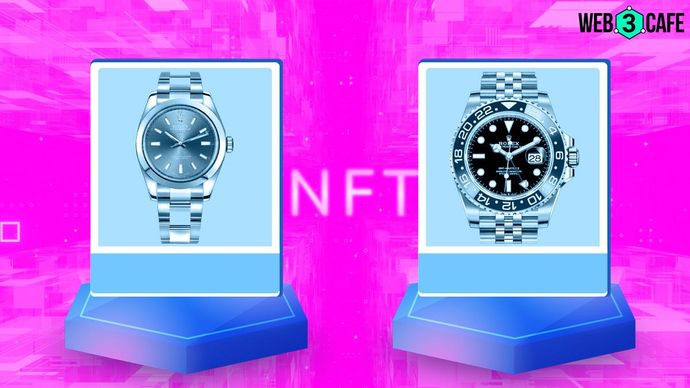Someone got NFTs in exchange for two Rolex watches used as collateral on a DeFi-lending platform
In what seems a disruptive move for decentralised financing, a person used two Rolex watches as collateral for the money he loaned from a DeFi-lending platform.

Highlights
- $14500 was borrowed from the DeFi platform
- The Rolex watches were placed with an escrow service
- Borrower received NFTs as proof of loan
The use of real-world goods as collateral for loans being taken on decentralised finance (DeFi) platforms was unheard of, but that’s about to change.
As per Arcade, which is a DeFi lending platform for NFTs, someone took a loan on its platform using two luxury Rolex watches as collateral. This is the first time that a platform has accepted a real-world asset for on-chain transactions in the open market.
It is expected that this event could open up new avenues in the decentralised finance space in the long run.
How did the transaction take place?
As per the lending platform, the borrower committed two Rolex watches for a loan of $14,500 at an annual interest of 12 percent. He later sent these watches to an escrow service to be placed there till the money was returned to the lending platform with interest.
The company in a statement said,
These @ROLEX watches, stored at @4KProtocol, are being used as collateral for DeFi loans on Arcade. Using real-world assets (RWAs) like luxury goods on-chain could open up a huge market for DeFi.
If in case the borrower of the loan defaults, Arcade can state a claim to the Rolex watches with the escrow service. However, if the borrower pays back the loan, the lender is entitled to a 12 percent profit at the end of the loan tenure.
More NFT use cases highlighted
An advisor to Arcade, Cirrus, went on to highlight the use case of NFTs in this scenario where the company sent back NFTs to the borrower where they could use those NFTs to tap into the global liquidity it offers. The fact that NFTs are immutable codes recorded on the blockchain gives the owner proof of ownership which cannot be altered by anyone.
Not only that, NFTs are programmable which means that they can be programmed to become null and void if the borrower exceeds the time period of the loan payment.
Cirrus explained that NFT-backed loans are a much safer way to take transactions forward instead of depending on pawn shops or being at the mercy of loan sharks.
“The Rolexes were sent to an escrow company, which then sent back NFTs representing ownership of the watches. The borrower can then use those NFTs to tap into global liquidity rather than take a predatory loan at their local pawn shop. If they default? The lender can use the NFTs to redeem the watches. One of the most obvious and easy-to-understand use cases of NFTs.”
On 14 June, the DeFi lending platform announced that it has reached $100 million in loan settlements and that the company is continually striving to make inroads into the NFT-backed loan market.
Why this is big for NFTs & DeFi
This transaction has set a precedent for the DeFi sector as more companies will start to explore the possibilities of real-world assets for on-chain loans. Since NFT lending has been capped by the types of NFTs and is mostly restricted to the digital artwork space, this could unlock access to an unexplored segment of NFTs.
The physical collectibles market was estimated to value $402 billion in 2021. It is projected to hit the $1 trillion mark in the coming 10 years. As the lending process becomes easier on-chain, we could see an influx of these real-world asset loans, subsequently opening doors to more avenues in the decentralised finance space.
